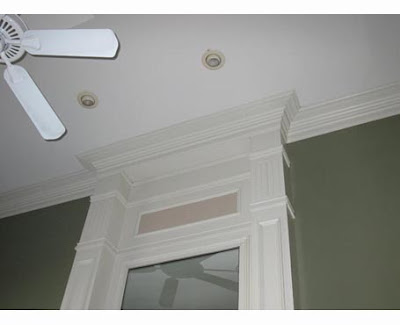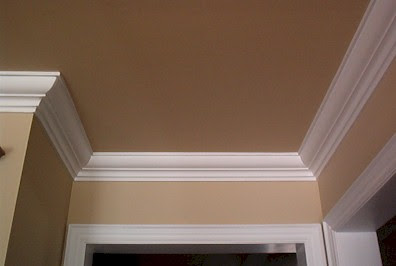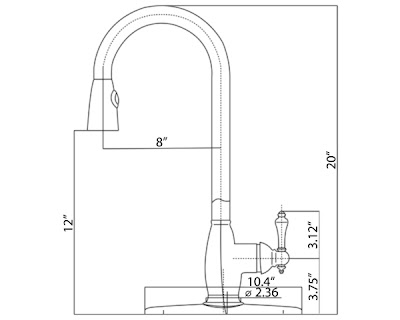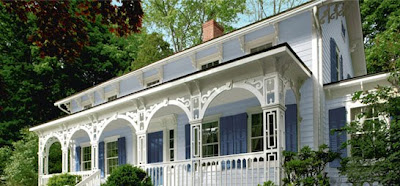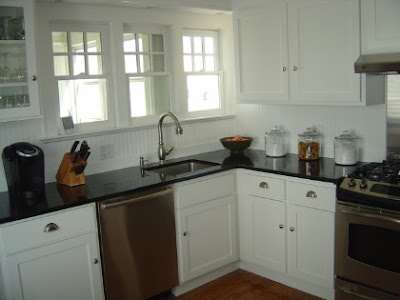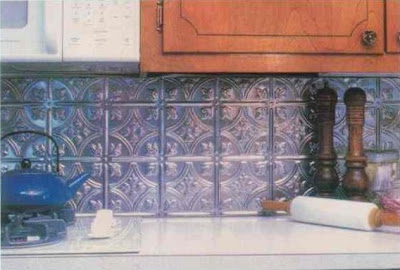As promised, I'm back with more details about our recent kitchen purchases. This post will focus on the kitchen sink we're purchasing.
Buying a kitchen sink sounds pretty easy, right? Well, it may not as easy as you think. There are about a million options (not exaggerating) to choose from when shopping for a sink. You can find different styles and brands of sinks in different stores as well as additional sinks online. And some places have the same sink options but for different prices. Where to begin?!
First, let's break down a couple of the main options to consider when purchasing a sink.
MATERIAL: What's the sink made of???1. Stainless Steel: Found to be among the most durable sink materials, stainless steel is ideal for heavily used kitchens. Rust and water stains are easier to remove and happen less frequently. Stainless steel sinks are one of the most common materials being installed in homes.
Colors: Typically found in various shades of steel from muted finish to high gloss and shine finish.
Maintenance: The only requirements to maintain a stainless steel sink is to keep the sink bowl relatively rinsed and dry (not allow standing water for an extended amount of time), and wipe weekly with a special stainless steel wipe.
2. Natural Stone: Natural stone sinks are usually made of granite, marble, travertine, onyx, and soapstone. All of these options are thought to be great for any high-end kitchen. The natural stone does take significant maintenance and comes with a pretty hefty price tag but is resistant to scratches, dents, and stains.
Colors: Being a natural stone, the colors available are endless. Natural stone sinks should ideally be chosen in person to ensure colors are consistent with the homeowners color choices.
Maintenance: Most sinks composed of natural stone will have to be sealed with a special sealant at least twice a year. This will keep the sink from cracking or being damaged by water. It is also recommended that the only cleaner used be a mild soap without abrasive chemicals.
3. Cast Iron: Also known as "porcelain" due to the porcelain finish over the cast iron.
Colors: Cast iron sinks are known for being among the best sink options for the kitchen when seeking a sink in certain colors other than typical; black, white, and ivory. The way the sink is made enables it to be manufactured in essentially any colors you choose.
Maintenance: An advantage to the cast iron sink is that most harsh chemical cleaners will not compromise the material. These sinks will stain easy and may need an abrasive cleaning once a week to preserve shine.
Durability: People look to cast iron sinks regularly based on their durability. Made of cast iron, the sinks are noted as lasting much longer than average.
4. Cast Acrylic: Has a similar look to Cast Iron but without the actual cast iron base under the surface. Quite a bit cheaper in price, but it does scratch pretty easily.
Colors: Cast acrylic can be manufactured in most colors including standard and most common; black, white, and ivory.
Maintenance: Easy to care for simply wash with soap and water. Control staining by never leaving dirty dishes or standing water for extended periods of time.
5. Copper: Copper is among the least common kitchen sinks but has great appeal for those willing to pay the price. The color and details can be remarkable, and the care is normally easy. The price is driven up by difficulty creating a sink form from the copper and tricky installation is almost always a factor when choosing copper.
Colors: Copper is typically offered in the color of copper however the finish can be shiny to dull.
Maintenance: Keeping the sink relatively dry when not in use and wiping it down with a mild soap often is about all it will need. Be prepared for some dulling and scratches as the sink ages.
Durability: Copper sinks are semi-durable but thought to be among the least durable for the money in today’s market.
STYLE: What's the look of the sink, and how is it installed in the countertop?
1. Under-mount: Under-mount has gained popularity in homes over the last five years. The sink is mounted underneath the countertop to create a rimless look on the countertop. Usually can't be used with Laminate countertops... best with stone or solid surface counter materials.
2. Top-mount/Drop-in/Self-Rimming (3 names - same thing): A top-mount kitchen sink is installed with its outer rim sitting on top of the countertop. This option is very easy to install but does come with a few disadvantages. When wiping down the countertop, things can not be easily swept into the sink as with the under-mount. However, this style will help prevent water from being swooshed onto countertop surfaces with the lip providing as a shield. This is the most common style of sink being used in homes today.
3. Apron Front: Also referred to as a “farmhouse” sink, the apron front sink is the most detailed and designer look offered for the kitchen today. The name comes from the fact that the front of the sink is visible creating what looks like an apron on the front of the countertops. Most apron front sinks will require a custom sink cabinet to be installed.
4. Tile-In: Tile-In sinks are growing in reputation as more homeowners are turning to tile countertops. Granite is often too expensive, but granite tile will fit most average kitchen renovation budgets. The tile-in mounting will create a much better look with tile countertops. Simply install the sink then take advantage of the tile width rim which tiles can be installed on top of to create a flush look. This is today’s fastest growing style of all sink options for the kitchen.
5. Flush mount: This type of sink is formed by the fusion of sink and counter - such as with a solid surface material (like corian).
Whew! A lot of possibilities, right? And there's still color, shape, and size to consider in addition to the above.
Thankfully, with all these options being considered, I already had a pretty good idea of what kind of sink I wanted. So, I started by searching online for "the perfect sink". When I found what I wanted, I was then able to look it up through different websites to find the cheapest price (why pay more when you can pay less?).
Here were a few of the sink "musts" that I wanted...
Material: Cast Iron (Porcelain)
Color: White
Style: Undermount
With the above as my "search" criteria, I was able to pull up a plethora of sink options online and had several other options to consider: number of basins, shape, size, brand.
Ultimately, I decided on a sink with 2 basins. Although I considered just 1 large basin, I thought 2 was more practical - you get 2 separate spaces for doing dishes, prepping food, rinsing etc. Plus 2 separate drains. Bonus feature on my sink: The divider between the 2 basins is a low profile divider, meaning it doesn't come up as high as the sides of the sink. This allows for large items to be washed easily as if it were 1 basin.
Shape was not super important to me. Round vs. Square vs. Oval vs. something else.... The sink I happened to really like had a square basin. It gives it a little more modern look.
For Size, each basin is 9 inches deep - about as deep as you can get without being custom.
The brand is Kohler, which is well known for quality and got great reviews and sold in several stores.
The price? Here's where shopping around is handy. If we purchased the sink directly from
Kohler, it would cost about $715. Too much. But Home Depot and Lowe's both sell this sink for less.
Home Depot was actually the cheapest at $490.
Lowe's was slightly higher at $537. However, it just happens to be Lowe's policy that they will match their competitors prices PLUS take off 10%. So, with that, we were able to get the sink for $441 at Lowe's.
And here it is (you had to read a lot to get here)...

What do you think? Would this be the sink of your choice? What would you choose differently and why? Do tell!












